That resistor circuit is know as a "voltage divider" as described here: https://en.wikipedia.org/wiki/Voltage_divider
The two resistors going to ground (R1 and R3) form a simple series circuit equivalent to a single 2Kohm resistor (with twice the power handling capacity of the 1K parts though that's probably not why they did it, likely it was reduce the number of different values needed).
R2 in series with the output will have a voltage drop across it induced by the current that is flowing into R1+R3. Ignoring any current flowing into the GPIO pin and any resistance internal to the sensor output (which are likely insignificant in this application), using Ohms law the voltage Vin at the GPIO pin can be expressed as:
Vin = Vecho * (R1 + R3) / (R1 + R2 + R3)
where Vin is the voltage at the GPIO input, and Vecho is the voltage at the sensor output.
Plugging in values of R1, R2 and R3, the voltage at the GPIO pin will be 2/3 of the voltage of the sensor output. The effective output impedance as seen from the GPIO pin will be R2 in parallel with (R1+R3) or:
Rout = 1 / (1/R2 + 1/(R1+R3)) or approximately 666.7 ohms.
So the "equivalent" circuit would be the same as if the sensor output was being driven from a (5V * 2/3) or 3.333V power rail, through a 666.7ohm resistor. It is essential the equivalent resistance here be be much less than the input resistance of the the GPIO pin to avoid the unwanted loading effects that we ignored earlier. Since the typical CMOS input resistance around a Megaohm that is satisfied.
Also, the loading on the ECHO output must be considered. Some logic families can't source much current, some as little at 2mA. The loading on the ECHO pin is the series sum of R1+R2+R3 or 3Kohm, so the current drain is at most 5V/3K = 1.667mA, likely within the spec of the output.
Modern IC's that are pushing the size of the transistors ever smaller can't handle as much voltage (and don't need as much voltage to operate). Although the Raspberry PI board is powered from 5V, the power rails used to power the processor IC are down-converted to lower voltages. The power rail for the GPIO of that IC cannot be more than 3.3V nominal, and I/O is not tolerant of 5V logic. Thus this voltage divider is a simple and cheap way to convert from 5V logic outputs to 3.3V logic inputs.
Tim

